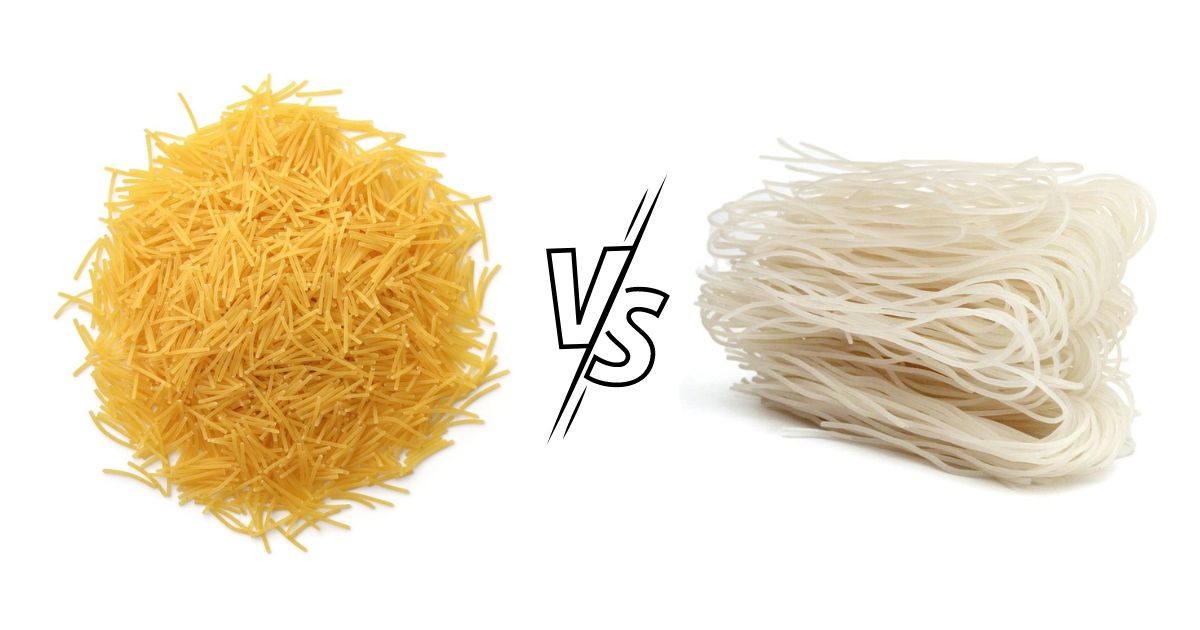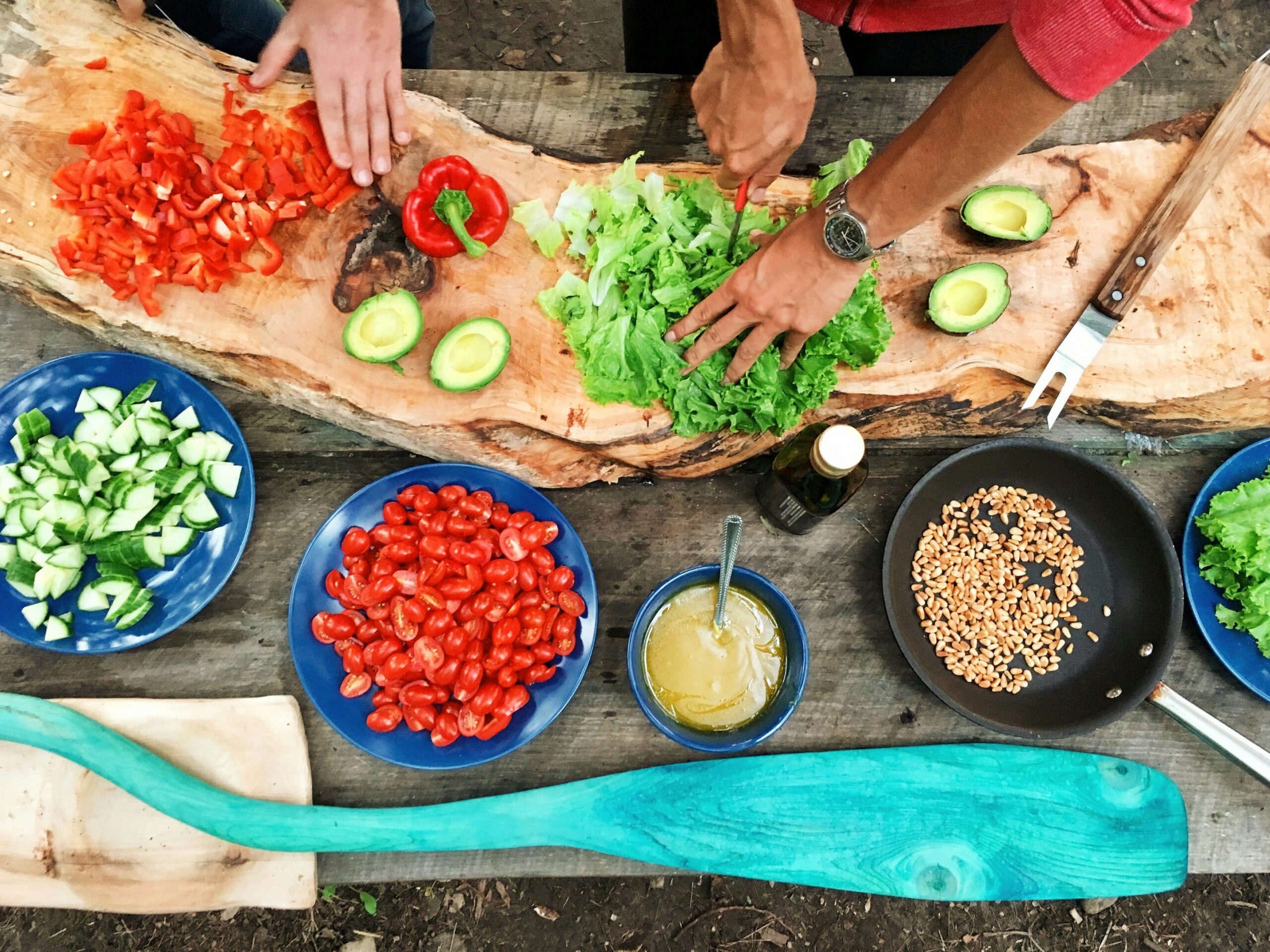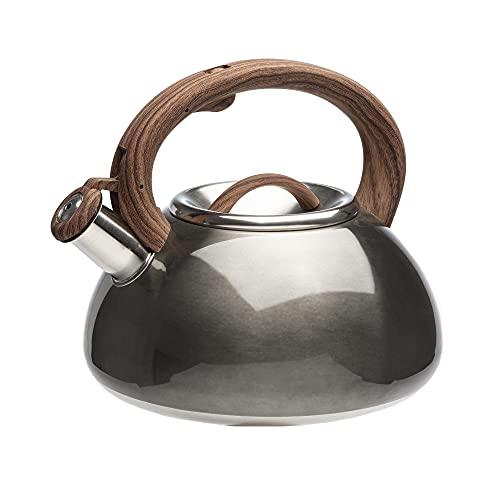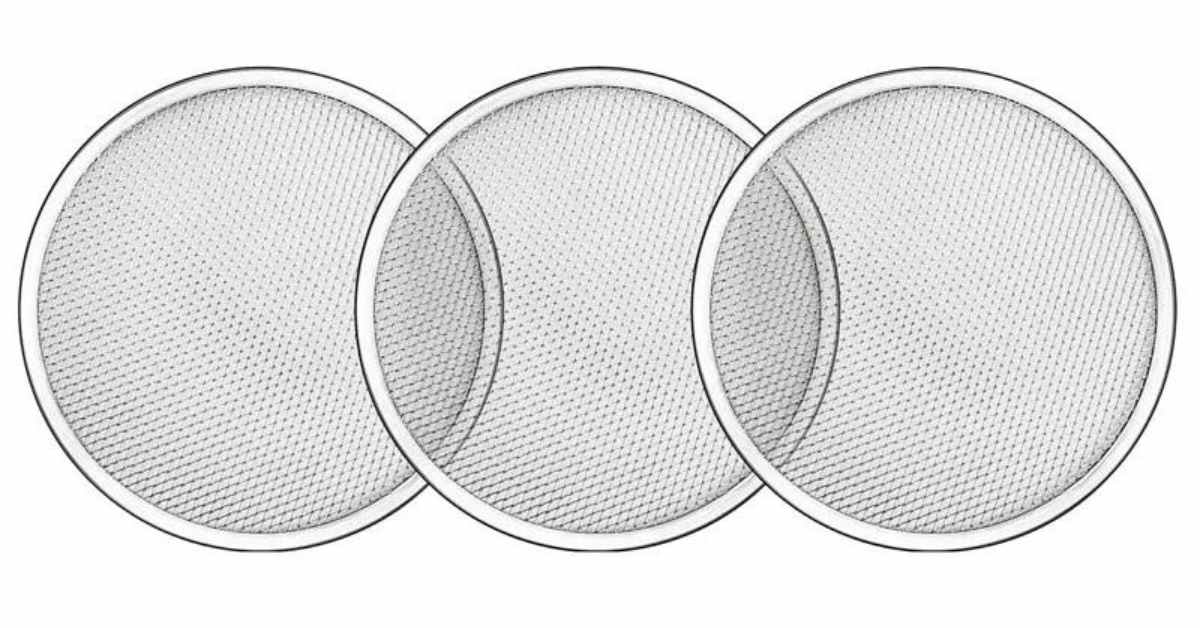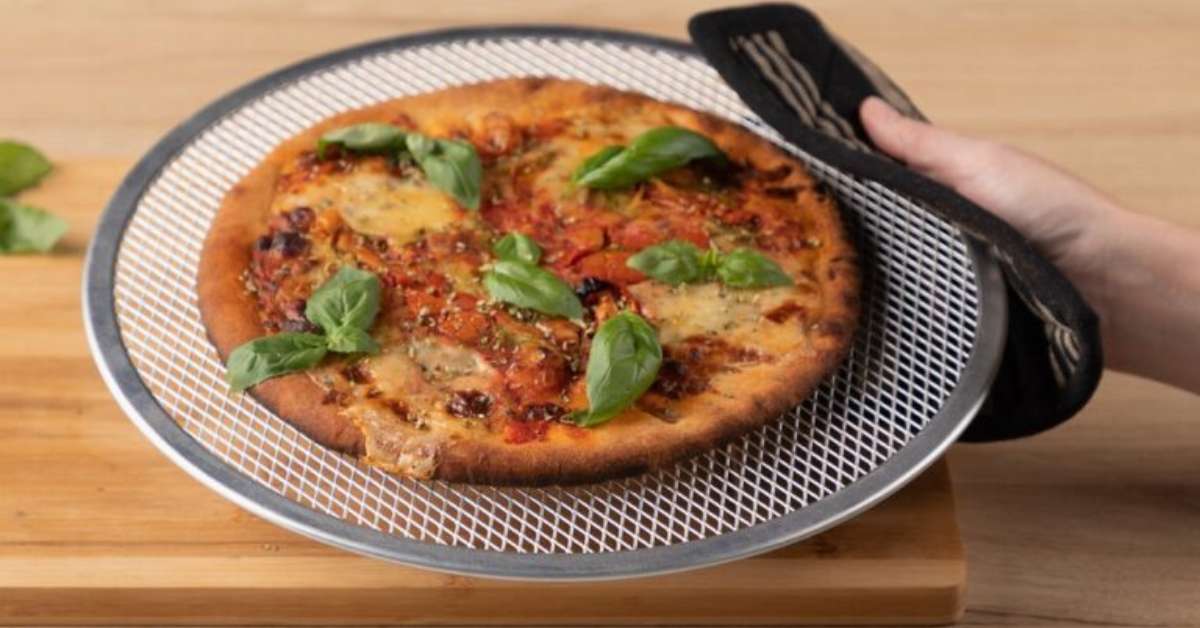When it comes to Asian cuisine, noodles are a staple ingredient. Two popular types of noodles often used in various dishes are vermicelli and rice noodles. Get ready to be mind-blown with the ultimate comparison of Vermicelli vs Rice Noodles. While they may look similar, there are several key differences between these two types of noodles.
The history of these two types of noodles dates back centuries. Vermicelli is believed to have originated in China during the Han dynasty, while rice noodles are believed to have originated in Southeast Asia. Both noodles have been used in traditional dishes for generations and have become popular in many countries worldwide.
Table of Contents
ToggleWhat is Vermicelli?
Vermicelli is a type of thin, translucent noodle that is made from mung bean starch. It is a popular ingredient in many Asian dishes, including stir-fries, soups, salads, and spring rolls. Vermicelli noodles come in various shapes and sizes, from thin and delicate to thick and chewy.
Types of Vermicelli Noodles
There are several different vermicelli noodles, each with unique characteristics. Some popular kinds of vermicelli noodles include:
- Bean thread vermicelli – made from mung bean starch, these noodles are thin and transparent.
- Rice vermicelli – made from rice flour, these noodles are also known as rice sticks and are commonly used in dishes such as pho.
- Cellophane noodles – made from a combination of mung bean and potato starch- are translucent and slightly chewy.
What are Rice Noodles?
Rice noodles, also known as rice sticks, are a type of noodle that is made from rice flour and water. They are commonly used in Asian dishes, including pho, pad Thai, and laksa. Rice noodles are known for their chewy texture and ability to absorb the flavors of the cooked dish.
Types of Rice Noodles
There are several rice noodles, each with unique characteristics. Some famous rice noodles include:
- Rice vermicelli, bun, or sen mee, a thin and translucent noodle.
- Flat rice noodles – also known as ho fun, are wide and flat and commonly used in dishes such as chow fun.
- Rice sticks – also known as bee hoon or mai fun, these noodles are thin and round and are commonly used in dishes such as pad Thai.
- Rice thread noodles – banshee or cellophane noodles- are thin, transparent, and commonly used in spring rolls and salads.
Overall, rice noodles are a versatile and delicious ingredient that can be used in various dishes. Whether you prefer thin and translucent rice vermicelli or wide and flat ho fun, these noodles can add a unique texture and flavor to your favorite Asian-inspired dishes.
Texture and Flavor Comparison
Vermicelli’s Texture and Flavor
Vermicelli noodles have a unique texture and flavor that vary depending on your vermicelli. Bean thread vermicelli is thin and delicate, with a slightly chewy texture and a neutral flavor that can absorb the flavors of the cooked dish. Rice vermicelli is also light but has a more tender texture and a slightly nutty flavor.
Cellophane noodles, on the other hand, have a slightly chewy texture and a mild flavor that can add a subtle crunch to salads and spring rolls.
Rice Noodles’ Texture and Flavor
Rice noodles are known for their chewy texture and ability to absorb the flavors of the cooked dish. Rice vermicelli, for example, has a soft and tender texture that can soak the broth in a bowl of pho or the sweet and sour sauce in a pad Thai.
Flat rice noodles have a broader and flatter shape, giving them a slightly chewy texture and a nutty flavor. Rice sticks are thin and round, with a tender texture that can add a delicate crunch to stir-fries and soups.
Nutritional Value of Vermicelli vs Rice Noodles
Vermicelli and rice noodles are both low-fat, low-calorie foods that are a great source of carbohydrates. However, there are some differences in their nutritional value.
Nutritional Information for Vermicelli Noodles
One serving of vermicelli noodles (about 2 ounces or 56 grams) contains approximately:
- Calories: 200
- Protein: 6 grams
- Fat: 1 gram
- Carbohydrates: 44 grams
- Fiber: 2 grams
- Sodium: 5 milligrams
Vermicelli noodles are also a good source of iron, with one serving to provide approximately 10% of your recommended daily intake.
Nutritional Information for Rice Noodles
One serving of rice noodles (about 2 ounces or 56 grams) contains approximately:
- Calories: 190
- Protein: 4 grams
- Fat: 0.5 grams
- Carbohydrates: 43 grams
- Fiber: 1 gram
- Sodium: 10 milligrams
Rice noodles are also a good source of iron, with one serving to provide approximately 8% of your recommended daily intake.
Comparison Table of the Nutritional Value of Vermicelli vs Rice Noodles
Here is a comparison table of the nutritional value of vermicelli and rice noodles based on a 2-ounce (56-gram) serving:
| Nutrient | Vermicelli Noodles | Rice Noodles |
| Calories | 200 | 190 |
| Protein | 6 grams | 4 grams |
| Fat | 1 gram | 0.5 grams |
| Carbohydrates | 44 grams | 43 grams |
| Fiber | 2 grams | 1 gram |
| Sodium | 5 milligrams | 10 milligrams |
| Iron (Daily Value) | 10% | 8% |
Overall, both vermicelli and rice noodles are healthy food choices that are low in fat and calories and high in carbohydrates. The choice between the two often comes down to personal preference and the specific dish you are making.
Health Benefits of Vermicelli vs Rice Noodles
Both vermicelli and rice noodles have some health benefits that can make them an excellent addition to a balanced diet.
Health Benefits of Vermicelli Noodles
Good source of carbohydrates: Vermicelli noodles are a great source of carbohydrates, which provide energy to the body.
Low in fat and calories: Vermicelli noodles are soft in fat and calories, making them a good choice for people trying to lose weight.
Rich in iron: Vermicelli noodles are a good source of iron, which is vital for producing red blood cells.
May help regulate blood sugar levels: Vermicelli noodles have a low glycemic index, which may help regulate blood sugar levels.
Health Benefits of Rice Noodles
Gluten-free: Rice noodles are naturally gluten-free, making them a good choice for people with gluten intolerance or celiac disease.
Low in fat and calories: Like vermicelli noodles, rice noodles are soft in fat and calories, which makes them a good choice for weight management.
Low glycemic index: Rice noodles have a low glycemic index, which means they may help regulate blood sugar levels.
Good source of minerals: Rice noodles are a good source of minerals such as magnesium and potassium, which are essential for overall health.
Culinary Uses of Vermicelli vs Rice Noodles
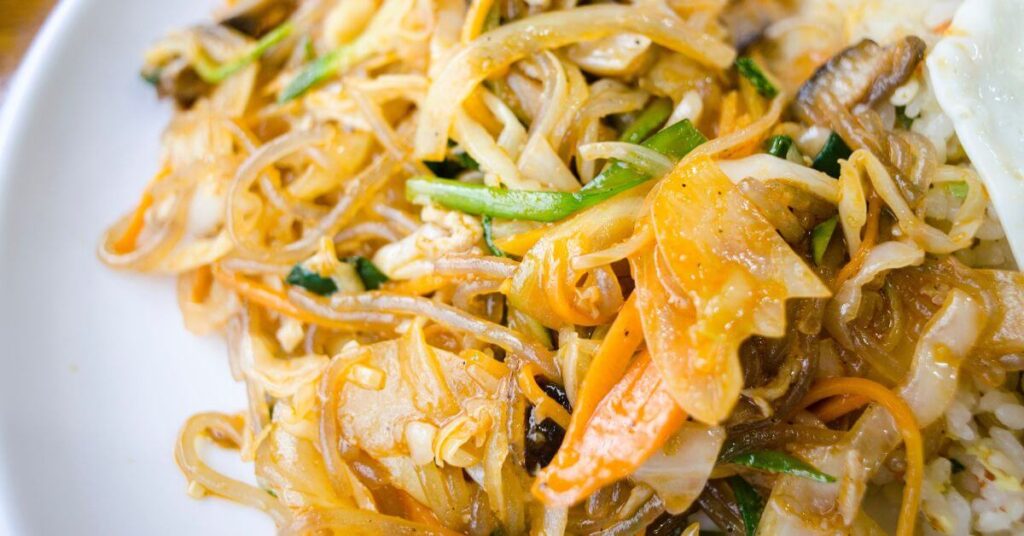
Both vermicelli and rice noodles are versatile ingredients that can be used in various dishes.
Popular Dishes Made with Vermicelli Noodles
Vietnamese spring rolls: Vermicelli noodles are a key ingredient in Vietnamese spring rolls, typically containing fresh herbs, vegetables, and shrimp or pork.
Indian desserts: Vermicelli noodles are commonly used in Indian desserts such as kheer, a sweet rice pudding made with milk, sugar, and vermicelli noodles.
Thai salads: Vermicelli noodles are often used in Thai salads, such as yum woon sen, which typically contain shrimp, ground pork, and a spicy dressing.
Korean stir-fry dishes: Vermicelli noodles are sometimes used in Korean stir-fry dishes, such as japchae, which typically contain beef, vegetables, and a soy sauce-based sauce.
Popular Dishes Made with Rice Noodles
Pad Thai: Rice noodles are a vital ingredient in the popular Thai dish, typically containing shrimp, chicken, tofu, eggs, and peanuts.
Vietnamese pho: Rice noodles are the base of the famous dish pho, which typically contains beef or chicken broth, meat, herbs, and spices.
Chinese stir-fries: Rice noodles are often used in Chinese stir-fry dishes, such as chow fun, which typically contain beef, shrimp, and vegetables.
Malaysian laksa: Rice noodles are a vital ingredient in the Malaysian dish, laksa, which also typically contains coconut milk, fish or shrimp, and a spicy broth.
Overall, vermicelli and rice noodles can be used in various dishes from different cuisines, making them versatile ingredient in the kitchen.
Cooking Techniques of Vermicelli vs Rice Noodles
There are several ways to cook vermicelli and rice noodles, and choosing the proper cooking technique can make all the difference in the texture and flavor of your dish.
Different Ways to Cook Vermicelli Noodles
- Boiling: Vermicelli noodles can be cooked in water for 3-5 minutes until soft and tender.
- Steaming: Vermicelli noodles can be boiled in a steamer basket for 3-5 minutes until cooked.
- Stir-frying: Vermicelli noodles can be stir-fried with vegetables and protein for a quick and easy meal.
- Deep-frying: Vermicelli noodles can be deep-fried to create a crispy and crunchy texture in Vietnamese fried spring rolls.
Different Ways to Cook Rice Noodles
- Soaking: Rice noodles should be washed in hot water for 15-20 minutes until soft and pliable before being used in a dish.
- Boiling: Rice noodles can be boiled in water for 2-3 minutes until cooked.
- Stir-frying: Rice noodles can be stir-fried with vegetables and protein for a quick and easy meal.
- Steaming: Rice noodles can be boiled in a steamer basket for 3-5 minutes until cooked.
How to store vermicelli and rice noodles
Properly storing them is essential to maintain their quality and freshness. Here are some tips on how to keep both types of noodles:
- Store dry vermicelli and rice noodles in an airtight container like a pantry or cupboard in a cool, dry place.
- Once the package is opened, transfer the noodles to an airtight container or resealable bag and store them in the same calm, dry place.
- Use the noodles within the expiry date mentioned on the packaging. Even if the noodles are correctly stored, they can still go wrong if they are past their expiry date.
- Cooked vermicelli and rice noodles can be stored in the refrigerator for up to 3 days. Store them in an airtight container or resealable bag.
It’s important to note that storing cooked noodles for too long can affect their texture and flavor, so it’s best to cook only what you need and store any leftovers promptly.
Vermicelli vs Rice Noodles: Which One is Better?
Both options have unique qualities when choosing between vermicelli and rice noodles. Here’s a breakdown of their pros and cons:
Vermicelli Noodles
Pros:
- Quick and easy to cook.
- It can be versatile in various dishes, from soups to salads to stir-fries.
- Low in fat and high in carbohydrates make them a good energy source.
Cons:
- They can be bland and require a flavorful sauce or seasoning to enhance their taste.
- It can quickly become mushy if overcooked.
Rice Noodles
Pros:
- Gluten-free and a good option for those with gluten sensitivities or celiac disease.
- Have a delicate texture and mild flavor that pairs well with various ingredients and sauces.
- Holds up well in soups and stews.
Cons:
- They can be tricky to cook perfectly, quickly becoming sticky or clumpy if overcooked.
- Lower nutritional value compared to other noodles, such as whole wheat or buckwheat noodles.
Overall, both vermicelli and rice noodles are great options for various dishes. The choice between the two ultimately comes down to personal preference, dietary needs, and cooking preferences.
You can also read: Trader Joe’s Pita Bread: The Ultimate Guide 2023
Frequently Asked Questions (FAQs)
What are the most popular dishes made with vermicelli and rice noodles?
Vermicelli noodles are commonly used in Vietnamese spring rolls, vermicelli salads, and stir-fries. Rice noodles are famous in pad thai, pho, and laksa dishes.
Can vermicelli and rice noodles be used interchangeably in recipes?
While both noodles are versatile, they have slightly different textures and flavors, so they may only sometimes be interchangeable in recipes. It’s best to use the type of noodle specified in the recipe for the best results.
What is the shelf life of vermicelli and rice noodles?
Both vermicelli and rice noodles have a long shelf life when stored correctly in a cool, dry place. They can last up to a year or more if unopened and up to a few months once opened.
Conclusion
Vermicelli vs rice noodles may seem similar but differ in texture, flavor, nutritional value, and culinary uses. Vermicelli noodles are thinner and have a softer texture, while rice noodles are broader and chewier. Regarding nutritional value, rice noodles have fewer calories and more fiber, but vermicelli noodles are richer in iron and protein.
Both noodles have health benefits and can be used in various dishes, from soups to stir-fries. Regarding cooking techniques, both noodles require different methods to achieve the perfect texture.
The choice between vermicelli vs rice noodles depends on personal preferences and the prepared dish. It’s recommended to try both and see which one suits your taste and needs better.

